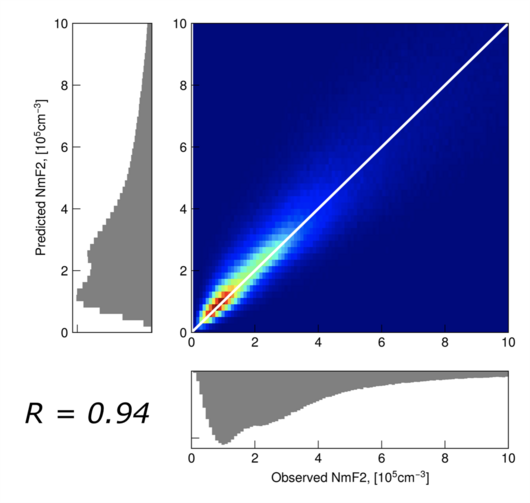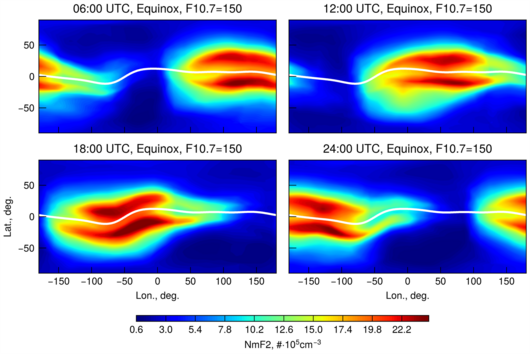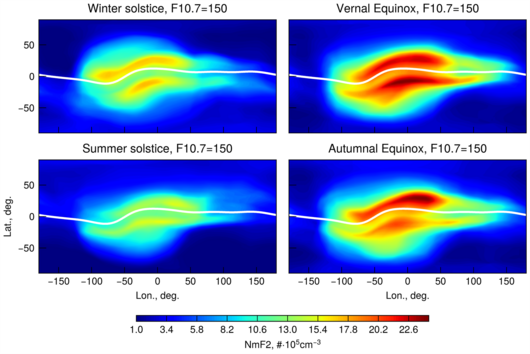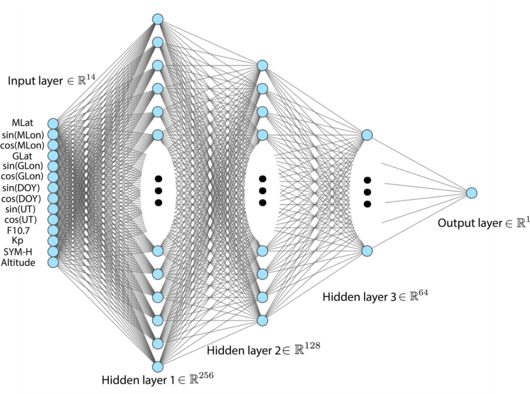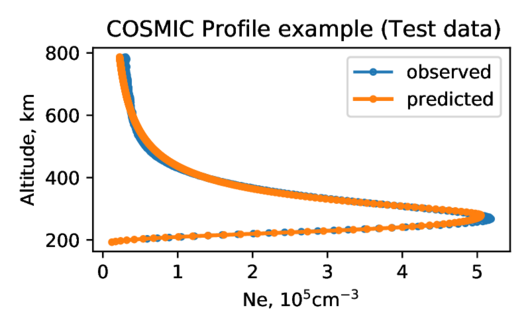Products
Neural Network Model
Example run of the neural network model, showing the diurnal variation of electron density at 400 km. The run was conducted for F10.7=150, during vernal equinox (DOY=84).
Example run of the neural network model, showing the variation of electron density with changing altitude. The two EIA crests appear at around 200 km, become most instense at ~350 km, and then slowly fade and merge into one at higher altitudes. The run was conducted for F10.7=150, during vernal equinox (DOY=84), 12:00 UTC. Geomagnetic equator is shown with a bold silver line.
Example run of the neural network model, showing the seasonal variation of electron density at 400 km. The run was conducted for F10.7=150, by changing DOY from 001 to 365.
VTEC diurnal evolution model
Example run of the neural network model for generating ionospheric Vertical Total Electron Content (VTEC) over a 24-h cycle. The run was conducted with F10.7 = 125.6 and DOY=1.

